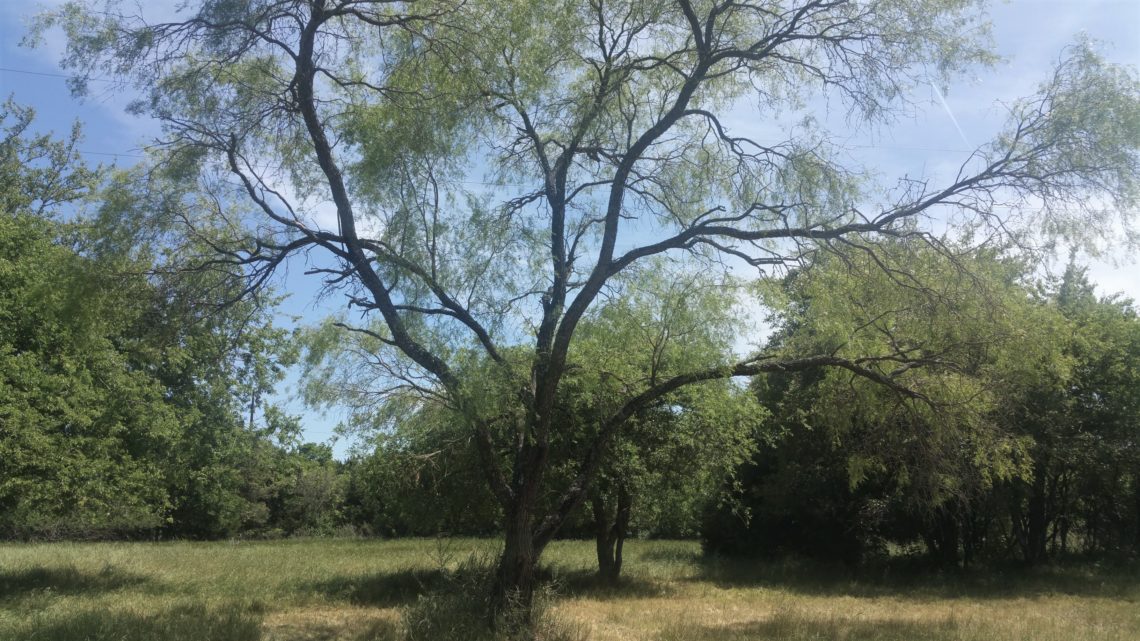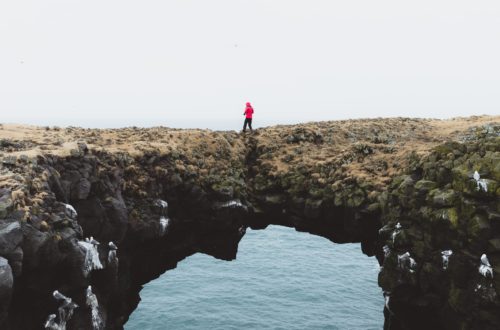
Hugging Trees… Mesquite Trees That Is
Last week’s Earth Day marked the 50th anniversary of the day when millions of people joined together to focus attention on environmental issues. Though sometimes associated with radical ideas, for the most part Earth Day remains an occasion for peaceful events and positive actions: environmental education programs; tree planting; trash collection; reduction of water, air and electronic waste pollution. Due to social distancing precautions, this year’s celebration moved to 100s of online events when people gathered to attend virtual concerts, listen to speakers or donate to favorite causes. Whether one agrees with the principles of Earth Day or not, our collective awareness of the importance of caring for the resources of this world has increased since April 22, 1970.
Thinking about Earth Day reminded me of the not-so-positive name for environmentalists that cropped up along with the green movement of the 60s and 70s: tree huggers. I thought it was coined about the time the word hippie showed up in our lexicon, but I discovered that the term is much, much older. It originally referred to some Hindus in India in the 1730s who physically hugged the trees in a sacred grove that was slated to be destroyed. More recently, the negative connotations of the epithet has changed somewhat from the dismissive tone of the 70s. Several groups who work on environmental issues proudly describe themselves as tree huggers.
Although I do my small part to work towards a sustainable future (recycling and conserving resources), my own experience as a tree hugger has nothing to do with protests or noble causes, but centers around a close encounter with a huge mesquite tree in the front yard of my childhood home. I was about 11 years old and happily engaged in one of my favorite activities, tree climbing. Despite its rough bark and wicked thorns, the branching nature of the mesquite made it a favorite. That day I perched gingerly high up in the tree, enjoying my “secret” hideaway. As I started down, I slipped, lost my balance, and grabbed for the nearest branch. My Keds-clad feet dangled about 20 feet off the ground and I began to scream my head off, desperate for a rescue. As I hugged the tree, the dry and jagged bark dug ever deeper into my scrawny freckled arm. The tighter I clung the deeper the gouges, until finally pain and gravity convinced me to let go. I was certain that broken legs and emergency room trips were in my future. I fell with a thud and discovered that I was not actually 20 feet off the ground, but only six feet from safety. I ran into the house, where my startled mother doctored my bleeding arm with mercurochrome. My red-painted skin stung like heck, and I carried the scars of many cuts, tears and scrapes for months. The memory of my erstwhile adventure as a tree hugger is colored by age, experience and the pandemic lens through which I filter most things these days. The scars are faded, but that long ago encounter with a gnarly tree still instructs.
Two kinds of fear overwhelmed me that day, fears of real calamity and of imagined ones. My emotions were working overtime, and I felt trapped and scared. Even though my little girl self (admittedly, I was a budding drama queen) feared for my life, I wasn’t actually in danger. The solid ground was right below me, much closer than I thought. Paralyzed by fear, I kept on clinging to the rough branch, and it kept right on cutting and scraping me. I thought that by holding on as tight as I could where I was, I would somehow be safer. Fear lead to indecision, and indecision increased both the fear and the injury. It was only when I let go that I found relief and the first aid that allowed me to heal. Solving my problem required letting go of my fear and falling straight into it. It was only then that I could head towards the safety and comfort that were just a few yards away.
It’s easy to picture that old mesquite tree since about 50 yards from my house, several big mesquite trees thrive. Their trunks twist and turn and the branches spread out in uneven patterns. Their willow-like leaves and twigs are festooned with long thorns that make rose barbs look like wimpy imposters. I am not tempted to climb them. Should I decide to hug one of them, their bark would cut me deeply and if I stood too close, thorn-filled branches littering the ground beneath them would slice right through my sneakers. They are neither a desirable nor particularly attractive tree. They aren’t gracious and beautiful like the towering Texas live oaks or the budding pecan trees that also dot our hillside. Mesquite trees lack a lot of redeeming qualities, but have these things in abundance: stamina, low-maintenance and longevity. They don’t need tending or coddling like tender fruit trees. They are just about impossible to kill and they grow quickly, as any rancher knows who tries to clear pastures for grazing. With time, tenacious mesquite trees can grow into huge trees like the ones in my childhood yard and at my home. Their rough and thorny branches keep some predators at bay while providing shade for animals in barren spaces. Some people find uses for their seed pods, sap and bark. My fireplace mantel is a slab of polished and sealed mesquite… and their wood flavors up some pretty good Texas barbeque, I must admit. They may not be a hospitable place for tree-climbers or tree-huggers, but the lowly mesquite trees endure. They are what they are, plain and simple, thorns and all. They are imprinted into the Texas landscape and they will thrive here for decades to come.
I had some valid reasons to be fearful as I flailed around in the branches of that mesquite tree. Today, I do too. It’s a scary place to hang around in, this old world of ours, and I am wise to be wary. Indecision, however, adds to my distress. Being cautious and informed does not mean I have to stay in that moment, hanging from a limb, screaming my head off and hoping for a rescue. There comes a time when I need to rescue myself. The fear of what could happen can sometimes do more damage than the actual situation. When I let go of debilitating, paralyzing fear, I am often surprised by the outcome. Taking action moves me towards safety, though it does not negate the danger. Action can lead to a more realistic picture of what and where that danger is. Only then, when I take initiative, can I plan how to protect myself from what threatens me. Resources and comfort are solidly within my grasp… if I’m not too busy holding onto scary places.
Now, don’t get me wrong– I don’t advocate going out on a limb, and I don’t recommend hugging mesquite trees. Mesquite trees deserve the respect that all potential dangers require. They will still hurt you if you cling to them, and that’s a fact. And I’m pretty sure that there was no Earth Day mesquite-planting event designed to help clear up the air. We citizens of the earth are more numerous than the mesquite trees in Texas, which remind us that amidst thorny dangers, we also have staying power. We can endure and we will endure. There are good things to be said for loosening up and adapting to change while continuing to grow. Mesquite trees are good at that. I suspect that we humans are pretty good at it too. It’s a rough, inhospitable place where we are right now. It does no good to minimize the dangers. But we can’t live by dangling in limbo. Tree-hugging and fear-hugging keep our arms from reaching out to more sustainable ways of living. Sometimes, you have to let go and move towards those who care for you, and the One who can hear even the faintest cry for help.
Fears, dangers, threats? As real as mesquite trees. Endurance and stamina? As real as mesquite trees. Rescue, safety, security? As real as the dependable ground and the open arms of faith and hope and love, these three.
Leap, and the net will appear. John Burroughs/Goethe
The eternal God is your refuge and underneath are the everlasting arms. Deuteronomy 33:27
Questions for Reflection:
What helps you discern the differences between real and imagined fears?
What does ‘taking action’ when encountering fears mean to you?
Photo by author. Mesquite Tree, Bosque County, Texas, April 2020.





One Comment
Saranne Penberthy
Your ability to transmit your thoughts via the written word amazes me Beth. I have been working on a devotional about the Tufted Tit Mouse who never gives up flying into our window, fortunately not hard, in attempt to do something about which I am not sure.
Thank you for sharing your wonderful gift of language.
Punky